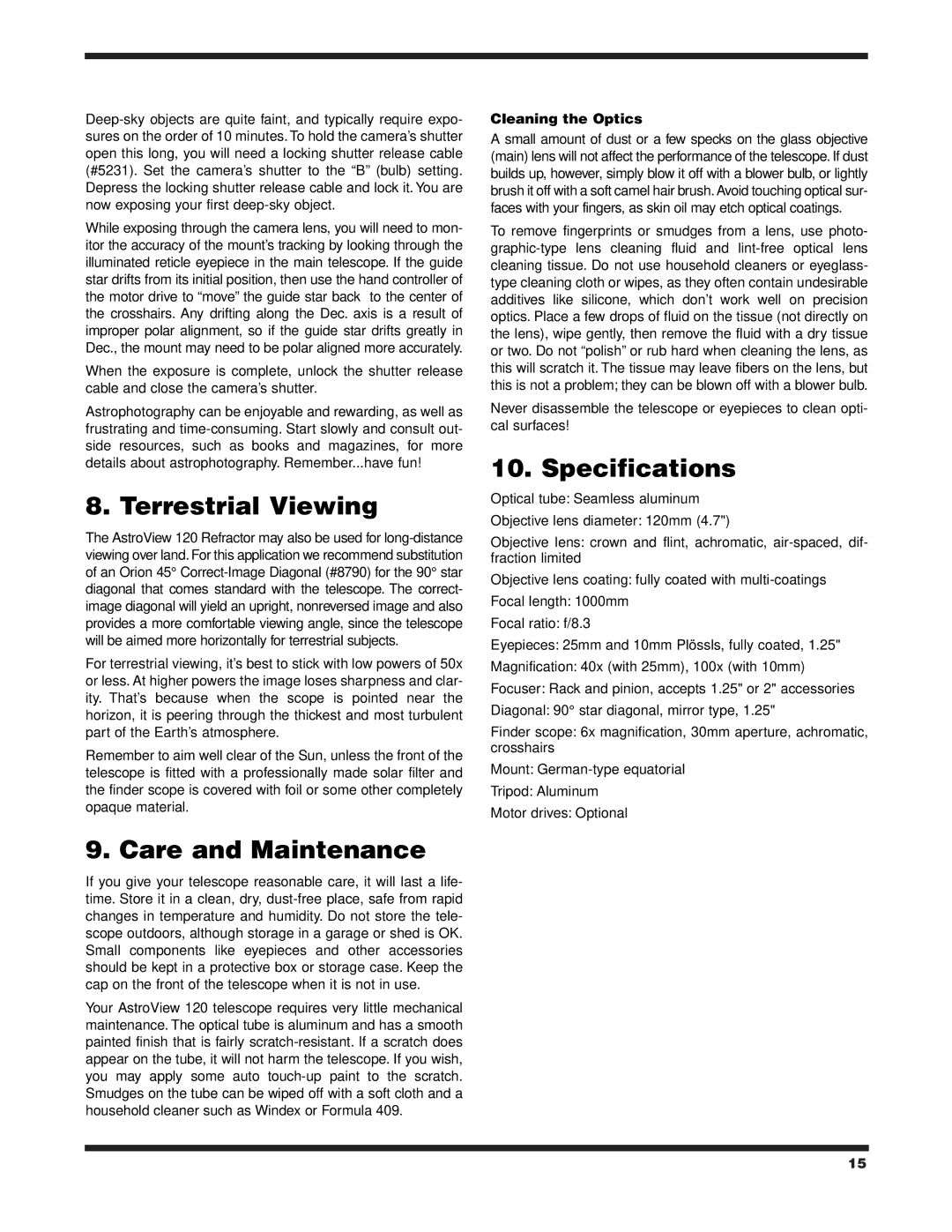120 EQ specifications
The Orion 120 EQ telescope is a testament to modern astronomy, designed to provide both novice stargazers and seasoned astronomers with an exceptional viewing experience. With a 120 mm aperture, this telescope offers a bright and clear image, making it ideal for observing celestial objects such as the Moon, planets, and deep-sky wonders.One of the standout features of the Orion 120 EQ is its optical design. The telescope uses a robust refractor setup, which is renowned for delivering high-quality images with minimal distortion. The fully coated optics enhance light transmission, ensuring that the views are not only bright but also rich in detail. This is particularly beneficial when exploring intricate lunar craters or the rings of Saturn.
The 120 EQ comes equipped with a sturdy equatorial mount that simplifies the tracking of celestial objects as they move across the night sky. With its smooth movements and precise adjustments, users can easily keep their target in sight, making it an excellent choice for astrophotography enthusiasts and visual observers alike. The mount also features a built-in polar scope, aiding in accurate alignment for observers in various geographic locations.
Additionally, the Orion 120 EQ includes high-quality eyepieces that maximize the telescope's optical capabilities. With different magnification options, users can switch between wide field views and detailed close-ups, making it versatile for various types of astronomical observation. The eyepieces are designed for comfort and ease of use, allowing for extended viewing sessions without causing strain.
Portability is another key characteristic of the Orion 120 EQ. Despite its robust performance, the telescope is relatively lightweight and can be easily transported to dark-sky locations, which is crucial for avoiding light pollution and enhancing the viewing experience. Its compact design ensures that it can fit into most car trunks, making it an ideal companion for astronomy outings.
The ease of setup is also noteworthy. The Orion 120 EQ is designed with user-friendliness in mind, enabling both beginners and experienced users to get started with minimal effort. The included user manual provides helpful tips and guidance, making it simple to start exploring the night sky in no time.
In summary, the Orion 120 EQ is a remarkable telescope that combines quality optics, a dependable equatorial mount, and user-friendly features. Whether you're just starting your astronomy journey or are looking to enhance your existing collection, the Orion 120 EQ provides the necessary tools to explore and appreciate the wonders of the universe. Its performance, portability, and ease of use truly set it apart in the world of amateur astronomy.

